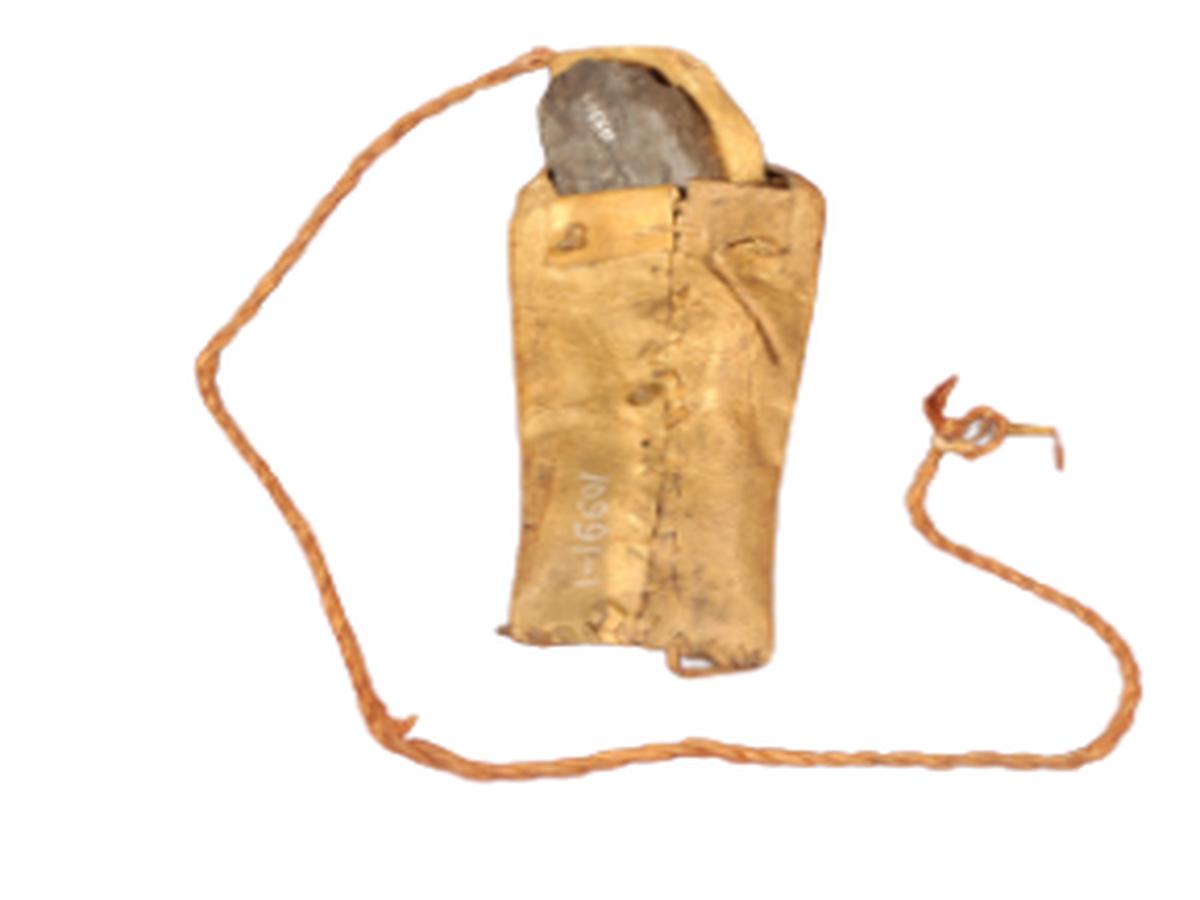State
Tribe Name
Art Type
short description
A leather pouch of the Abor tribe in Arunachal Pradesh represents a people resourceful in the daily use of natural materials. The rectangular pouch in leather exhibiting simple and practical use demonstrates the innovations of the tribe in designing durable utensils for survival.The pouch carries a flint (stone piece), which is, in fact, a very important tool in the daily life of these tribesmen, particularly for bringing to life fire. Flint helps strike and gives sparks when used with steel for making a fire- for cooking or ritual purposes
Thumbnail

Filter Postion
Left
Filter Background
Off
Theme
Filter Header Image

content
Image

description
A leather pouch of the Abor tribe in Arunachal Pradesh represents a people resourceful in the daily use of natural materials. The rectangular pouch in leather exhibiting simple and practical use demonstrates the innovations of the tribe in designing durable utensils for survival.The pouch carries a flint (stone piece), which is, in fact, a very important tool in the daily life of these tribesmen, particularly for bringing to life fire. Flint helps strike and gives sparks when used with steel for making a fire- for cooking or ritual purposes.
The stone itself would bear witness to how the very existence of the tribe relied on natural resources for survival in the terrain and climate of Arunachal Pradesh. Attached to the pouch is a ply of twisted bark fiber rope that might have been used for hanging the pouch around the neck or for tying it to a belt so that it is always handy when needed. A triangular flap somewhat covering the opening of the pouch, protects the contents while leather straps on the sides will secure the pouch when put on.The pouch, found in the Indian Museum, Kolkata, speaks for the craftsmanship of the Abor tribe, reflecting their ability to create practical, functional, and sustainable tools for every work of life.
The stone itself would bear witness to how the very existence of the tribe relied on natural resources for survival in the terrain and climate of Arunachal Pradesh. Attached to the pouch is a ply of twisted bark fiber rope that might have been used for hanging the pouch around the neck or for tying it to a belt so that it is always handy when needed. A triangular flap somewhat covering the opening of the pouch, protects the contents while leather straps on the sides will secure the pouch when put on.The pouch, found in the Indian Museum, Kolkata, speaks for the craftsmanship of the Abor tribe, reflecting their ability to create practical, functional, and sustainable tools for every work of life.
Image Mode
landscape
promoted
On
Verified
Off
